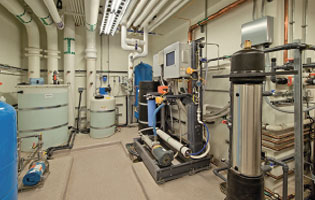PRODUCT INFORMATION
Chemical Terminology Education III
- front page
- product
- Injection treatment technology
- Technology Development Department
- Chemical Terminology Education III
Product Information
- heat treatment
-
water treatment
- Arsenic remover
- Desulfurizer
- Deaerator
- Water softener (calcium and magnesium ion removal)
- Carbon filter (removes odor and residual chlorine)
- Sand filter (removal of suspended impurities)
- Iron remover (removal of iron and manganese ions)
- RO water purifier
- Pre-backwash filter
- UV ultraviolet sterilizer
- Ion exchange resin
- reverse osmosis membrane tube
- quick filter
- Various tanks for water treatment
- Various application filter media
- 美國 Clack Clark control valve
- 美國 Fleck Control Valve
- 美國 Pentair Control Valve
- 美國 Autotrol Control Valve
- Runxin Control Valve
- Injection treatment
- Technology Development Department
-
brand
- Demo brand
- US DOW
- IDEX USA
- US CLACK
- EMERSON, USA
- American PENTAIR
- SIEMENS Germany
- American PULSAFEEDER
- Denmark DANFOSS
- Thailand HAYCARB
- France SUNTEC
- UK PUROLITE
- Japanese NOP
- Japan OLYMPIA
- Japan KATSURA
- BRAHMA, Italy
- SAGINOMIYA
- HONEYWELL
- AZBIL (YAMATAKE)
- OLTREMARE
- NIPCON
- TROCHOID
- domestic
- EGO
- KATO
- LECIP
- ATS
- JACOBI
- ETATRON
- WAVE CYBER
- BOSCHINI
- NIPPON
- WL
- CASH ACME
- YAZAKI
- RUNXIN
- About | Contact

Chemical Terminology Education III
Technical explanation
| Calcium Sulfate: | Commonly known as gypsum. When water is removed from a saturated solution of calcium sulfate, it possesses insoluble and precipitating properties. |
| Carbonate Hardness: | See "Hardness". |
| Positive ions: | Substance particles dissolved in water have a positive charge in the current period and are called positive ions. Physically, in any system of matter, the number of cations is equal to the number of anions (negatively charged ions). |
| Coagulation: | This is a chemical combination of small particles of suspended matter into larger particles of suspended matter to produce faster settling or better filtration. The most widely used coagulant is aluminum. Other sometimes used coagulants are sodium oxide, ferric chloride, lime, and manganese oxide. Polyelectrolytes (Polyelctrolyte) are often used as coagulant aids. |
| Chemical Oxygen Demand (COD): | It is a test used in wastewater where a chemically strong oxidizing agent reacts with some organic matter in the water. This test is more accurate than the BOD test, but the COD test cannot measure all organics in the water. See TOC. |
| Colorimetric Titration: | The titration method used to measure the final color change. |
| Compaction: | When reverse osmosis membranes are exposed to excessive pressure and/or temperature, resulting in changes in physical structure, the resulting permeation capacity will decrease. |
| Concentrated water: | Water that is rejected during the reverse osmosis process, this water contains a very concentrated amount of dissolved solids. |
| Concentration Polarization: | See "Boundary Layer". |
| Conductivity: | The ability of an aqueous solution to carry an electric current depends on the presence or absence of ions in the solution. Conductivity is a measure that describes this ability. Solutions of inorganic ions are relatively good conductors (and exhibit high conductivity), whereas solutions of organic molecules are relatively poor conductors (and exhibit low conductivity). High purity water is also a poor conductor. Conductivity is expressed in units of Siemen/cm (or mhos/cm/). Conductivity measurements are often used when testing the performance of reverse osmosis equipment. Conductivity changes with temperature, so it should be measured with a meter that has a temperature compensation function. The usual base reference temperature is 25C. Conductivity measurements are sometimes used to estimate the total amount of dissolved solids in water. This practice, while convenient, is imprecise. (See also Resistivity) |










